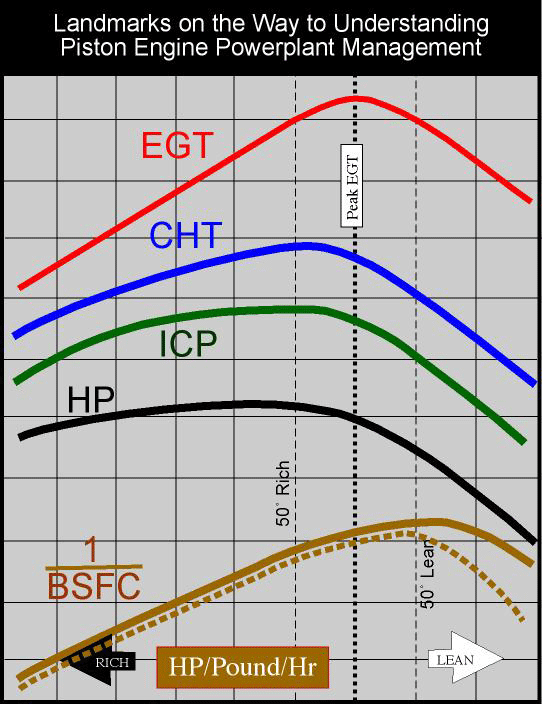Could the more efficient ignition/combustion gained from the EI result in the higher CHTs?
I will be running one PMAG and Slick on my -7.
Glenn Wilkinson
Glenn,
That is a wrong assumption.
The reason you get higher CHT's is that the spark timing is several degrees earlier, this then gets the combustion event going earlier than the OEM intended and the peak pressure occurs closer to TDC, which we call THETA PP. That is the degrees after top dead centre.
When the Theta PP is less but there is a lesser volume (piston closer to TDC) the expansion of the gas is going to result in higher ICP (Internal Cylinder Pressure). This results in a smaller boundary layer in the head and piston crown and thus more thermal transfer to them both.
Advancing the ignition does not gain you HP, unless it was not timed right to begin with and it can be demonstrated on a aircraft engine dyno that HP actually drops if you advance too far. We show this at the Carl Goulet Memorial Test Cell before each APS class. It is interesting to see peoples eyes open up at that point.
Advancing the spark timing helps with LOP operations however too much is counter productive. Some people find they can achieve further LOP than is optimal and while this might get bragging points it is inefficient in terms of BSFC.
When one considers that the nominal static timing of 25 as is typically used in an IO/O360/540 results in an actual spark timing of say 21 degrees due to lag in the magneto and this was the design parameter for the engine, what does one think when we change the mag to something else.
The EI is still using a form of gear drive in many of the EI's but some are inductive prix sensors with no mechanical lag. In a magneto beyond the gear is a bunch more mechanical things that have lag, but even a gear drive PMAG does not. The EI's fire earlier even if statically timed as such for 25 a spark at 25DBTDC.
This is why those who have set TDC and then moved past by a couple of degrees have yielded better CHT results.
My suggestion is run the least advance curve, induce 2-3 degrees ATDC before doing the blow in the tube or whatever other timing method to achieve a couple of degrees less advance. At lower MP and cruise settings when LOP you will have plenty of advance to achieve better LOP ops.
Run AVGAS ONLY.
If you want to do all the wrong things, run the most advance, have the timing set with no retard, use an inductive prox EI, and use mogas.
I should take a moment to harp on about using mogas. The latency is less which effectively advances the timing more than all the above. If you think that the OEM's designed the engine around a peak cylinder pressure with magneto's (retarded from 25DBTDC) and using avgas (more latency) the effective timing and the resulting ThetaPP is nothing like that of an EI aggressively timed on mogas.
As I can make an assumption very few people on VAF have seen this live before their own eyes on the best aircraft piston engine dyno in the world, I can understand many will struggle to grasp this concept. However believe me, I have more than an hour or two watching this stuff.
Its your engine, do what you like!







